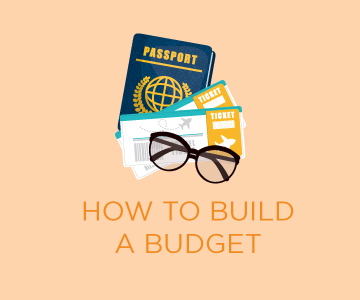Have you ever devoted time to working out a financial budget? Do you know exactly how much you are spending each month? If you incur a financial hardship, would you have enough in savings to handle the burden? Surprisingly, most people will answer no to at least one, if not all, of these questions. Most of us are just “too busy” to plan ahead for a financial emergency and think we’ll take time to better manage our finances “someday.”
Unfortunately, while we’re waiting for “someday,” a financial emergency can hit without warning and leave us scrambling to come up with extra money. The reality is that people can be unexpectedly affected by things such as a medical crisis, loss of job, breakdown of a costly item, loss and vandalism, pet medical emergencies and other unforeseen hardships. Does your current budget or savings provide for you to handle such an expense without burdening your cash flow?
Preparing a budget may seem difficult, restrictive and time-consuming, but the benefits far outweigh the effort, especially if you desire to live debt free and financially comfortable. Setting up a budget can be as complex or as simple as you want it to be, but the purpose remains the same. It’s a financial compass of where you stand at any given time and a roadmap to where you are going. If you are honest about how you are spending your money, a budget will clearly tell you how you might fare financially in an emergency. Tracking daily and monthly expenses compared to your income will quickly tell you what you have to work with and what changes can be made.

How to Build Your Budget: Expenses
- Outline Your Regular Expenses. When mapping out your budget, you’ll want to list all of the ways you are regularly spending money. Of course, there are routine items that require a good share of your income, such as rent or mortgage payments, groceries/household needs, prescriptions, utilities, car payments, gasoline and insurance.
- Estimate Your Periodic Expenses. Next you’ll want to add the money spent for periodic expenses like gifts, co-pays on doctor visits, licenses or classes. Other expenditures could be things like new clothing, dinner out, a vacation or other indulgences that are considered “extras” rather than essential items.
- Consider Your Debt. If you have loan or credit card payments, they should be listed and flagged as priorities for repayment. This is money you could potentially be putting into a savings or retirement account for your future, so I recommend making your best effort to get them paid off as quickly as possible.
- Note Your Cash Withdrawals. Finally, you’ll want to list any cash you typically spend during the month. Cash withdrawals, while necessary at times, should be controlled as much as possible to avoid overspending.
How to Build Your Budget: Income
Once you’ve listed your expenses, you can focus on your monthly take-home income. Comparing the two columns can be an eye-opener if you have not been keeping close tabs on how your spending compares to what you take in. Generally, you will easily spot areas where you can cut back or eliminate. Work your way down the list and look for changes that can be made. Think about how hard you work per hour to make the money you spent on a certain “extra,” and consider whether it was worth it. Here are some questions to consider:
- Could you write out a list before you go to the grocery store to save on impulse items?
- Can you bundle your utility services or change to a different phone or internet plan?
- Is it possible to limit your cash withdrawals or dinners out?
- Can you compare insurance company or pharmacy rates?
- Would it help to budget a certain amount for wanted items rather than spending without planning ahead?
Growing Your Savings
Once you see what you have to work with, you can come up with a reasonable amount from each paycheck to put away in a savings account and watch grow. Paying yourself in this way will reap big rewards if you are disciplined. Many choose to set up an automatic monthly transfer from checking to savings to ensure there is a deposit made to savings every month. If you receive gifts of money or have a tax refund, use that money to boost your savings balance.
If you’re wondering how much to save up, the answer varies for everyone. However, a common recommendation is that you keep the equivalent of at least three months of your salary in a savings account to access in the event of a financial emergency. You should always have enough in your emergency savings fund to cover the expenses on your required household list and be ready to forego any unnecessary spending until you can attain the recommended three-month level.
It may take you a while to create a solid budget, but it’s never too late to start. Consider the amount you put in the savings as one of the required “needs” within your budget and stick to it. There are tools online, such as Mint, Personal Capital, and many more—including the Personal Finance Manager if you’re a Bankers Trust customer—that can be helpful in preparing and managing a budget. If you are motivated to put yourself on a firm path to financial security, adhering to a budget is a surefire way to get there.








 Equal Housing Lender. SBA Preferred Lender. NMLS #440379
Equal Housing Lender. SBA Preferred Lender. NMLS #440379